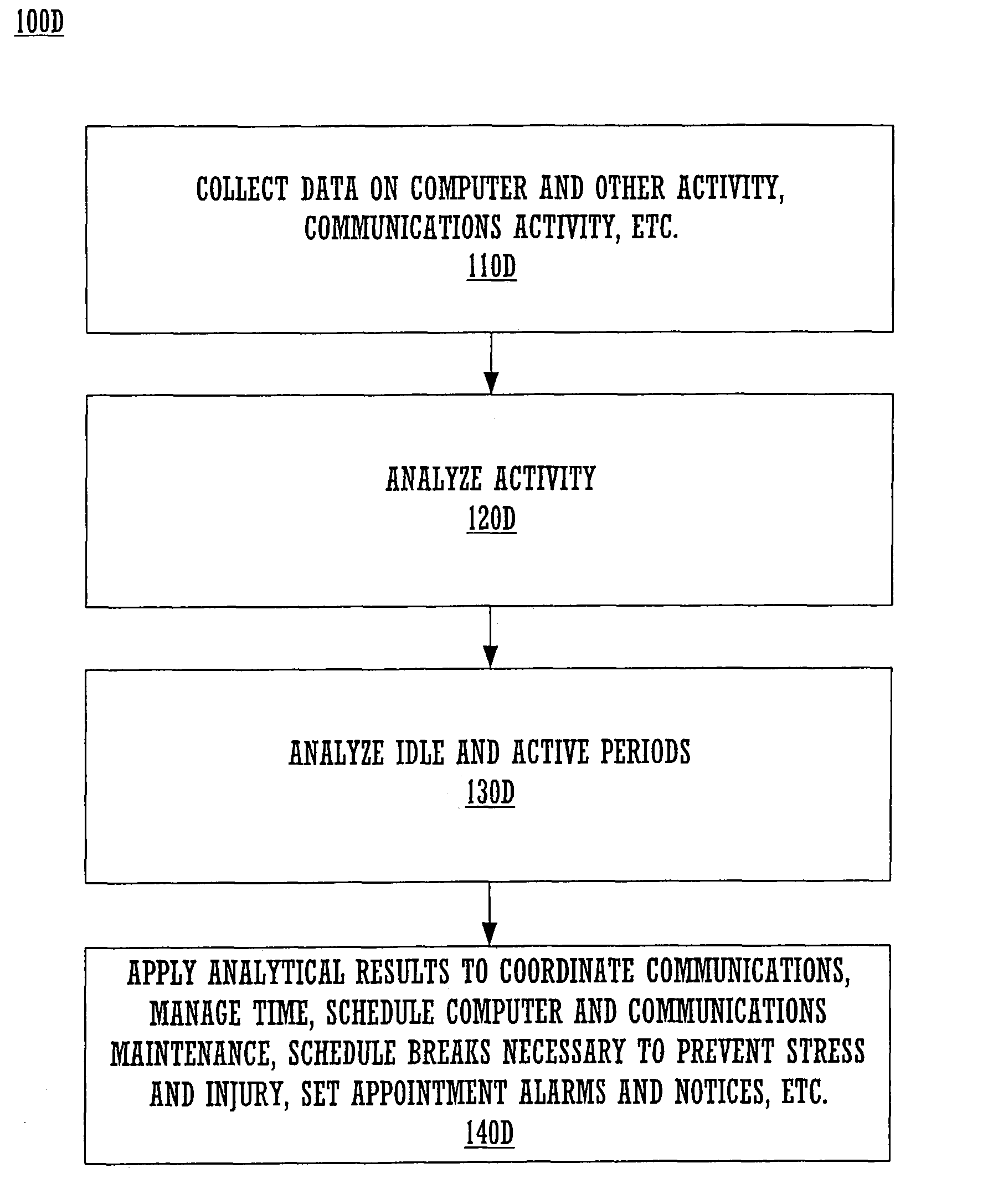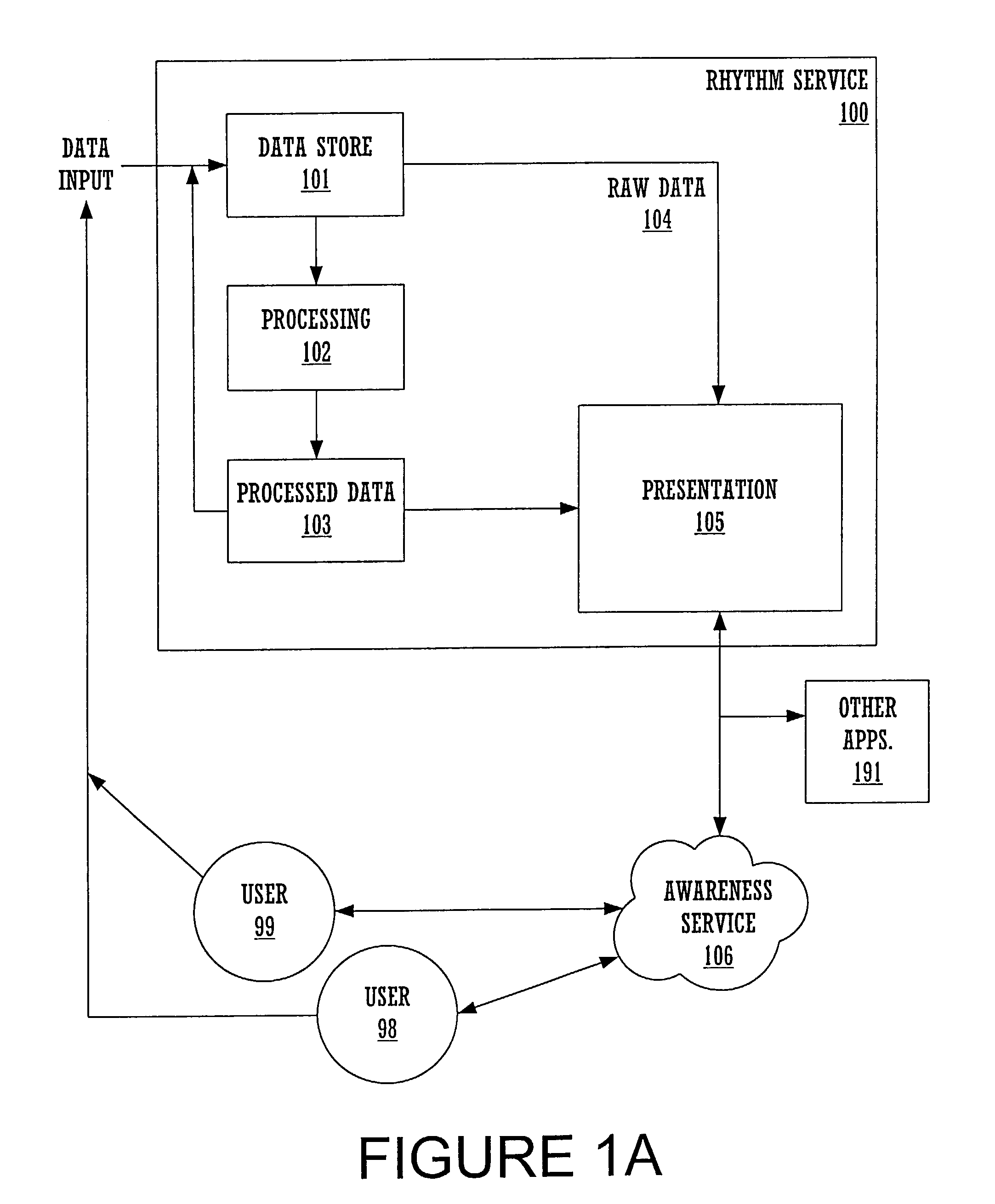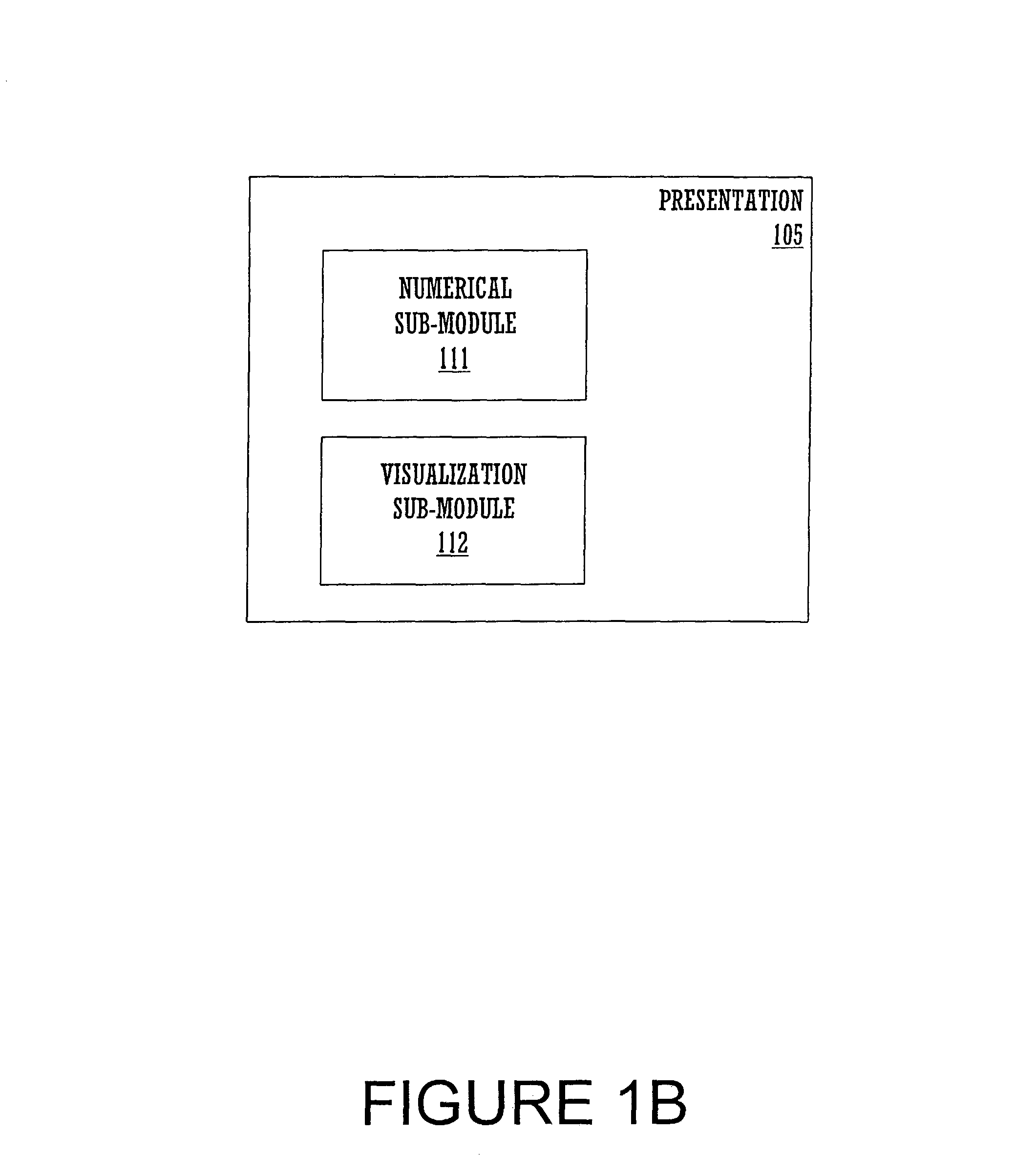Detecting and modeling temporal computer activity patterns
a temporal computer and activity pattern technology, applied in the field of detecting and projecting information regarding human behavior, can solve the problems of less uniform work hours among colleagues, exacerbate the problem, and hard to have such a shared sense of time among colleagues, and achieve the effect of accurately predicted and high confiden
- Summary
- Abstract
- Description
- Claims
- Application Information
AI Technical Summary
Benefits of technology
Problems solved by technology
Method used
Image
Examples
Embodiment Construction
In the following detailed description of an embodiment of the present invention, a method and system for inferring and applying coordination patterns from individual work and communication activity to facilitate communication between people, numerous specific details are set forth in order to provide a thorough understanding of the present invention. However, it will be recognized by one skilled in the art that the present invention may be practiced without these specific details or with equivalents thereof. In other instances, well-known methods, procedures, components, and circuits have not been described in detail as not to unnecessarily obscure aspects of the present invention.
Notation and Nomenclature
Some portions of the detailed descriptions which follow (e.g., processes 100D, 700A, 700F, 900, 1100, 1200, 1500, and 1600, and others) are presented in terms of procedures, steps, logic blocks, processing, and other symbolic representations of operations on data bits that can be p...
PUM
 Login to View More
Login to View More Abstract
Description
Claims
Application Information
 Login to View More
Login to View More - R&D
- Intellectual Property
- Life Sciences
- Materials
- Tech Scout
- Unparalleled Data Quality
- Higher Quality Content
- 60% Fewer Hallucinations
Browse by: Latest US Patents, China's latest patents, Technical Efficacy Thesaurus, Application Domain, Technology Topic, Popular Technical Reports.
© 2025 PatSnap. All rights reserved.Legal|Privacy policy|Modern Slavery Act Transparency Statement|Sitemap|About US| Contact US: help@patsnap.com



